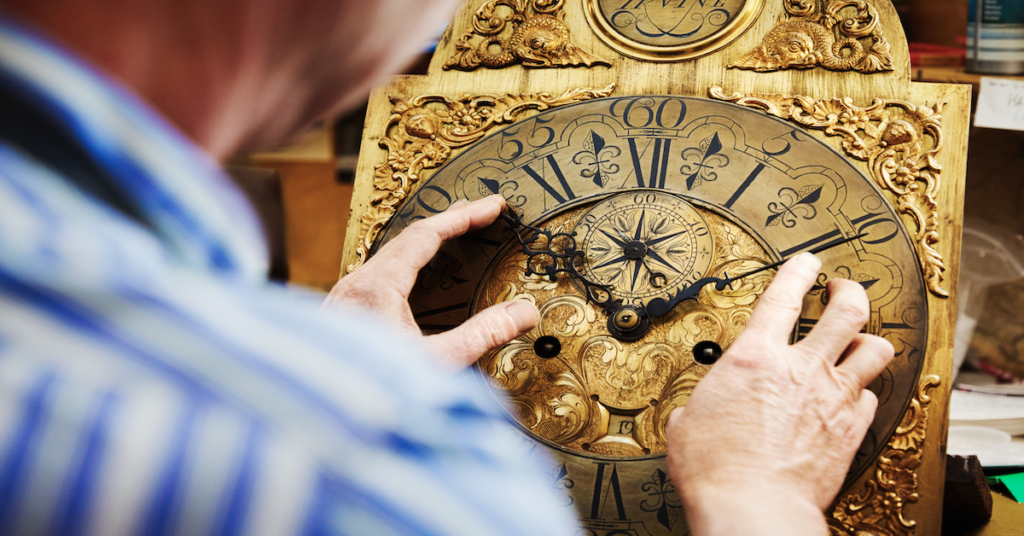Inheriting family heirlooms often comes with a flood of emotions. While these items hold deep sentimental value, there may come a time when you must decide whether to keep them or sell them. Whether it’s for financial reasons, lack of space, or the realization that the items no longer fit your lifestyle, selling heirlooms can be a tough decision. However, doing so doesn’t have to lead to regret. With the right approach, you can ensure that the process is thoughtful, fair, and emotionally sound. Here are the best ways to sell family heirlooms without regret.

Recognizing the Emotional Value of Heirlooms
Before deciding to part with any family heirloom, it’s essential to take a step back and assess its emotional value. Many items passed down through generations carry not just monetary worth but deep family history. Jewelry, artwork, furniture, and other heirlooms often come with stories that connect you to your ancestors. These memories can make the decision to sell particularly challenging.
Take time to reflect on the emotional significance of the heirlooms in question. Is this an item that carries meaningful memories or is it something you simply haven’t used in years? If you’re unsure about letting go, consider discussing the heirloom with family members. They may provide valuable perspective or share stories that enhance your understanding of its sentimental value.
Assessing the True Value of Your Heirlooms
Once you’ve decided that selling is the right option, the next step is determining the true value of your heirlooms. Family treasures may have a market value that differs significantly from their emotional worth, and understanding this difference is crucial to making informed decisions.
A professional appraisal is an essential part of this process. A certified appraiser will assess the item’s weight, material, craftsmanship, and condition. For jewelry, for instance, the appraisal will consider not just the metal’s purity but also any gemstones, design, or brand names. The value will also fluctuate based on the current market price of the metal or material—gold and silver prices, for example, change regularly.
It’s wise to get more than one appraisal to ensure you’re getting a fair and accurate valuation. Sometimes, different appraisers may have slightly different perspectives on a piece, and comparing them can help you make a more informed decision about how to proceed with selling.
Exploring Your Selling Options
Now that you understand the value of your items, you can begin exploring the best options for selling. There are several routes you can take, each with its own set of benefits and considerations.
Auction Houses
Auction houses are often the first choice for selling valuable family heirlooms, especially items like artwork, antique furniture, or rare jewelry. Auctions can be appealing because they allow you to reach a wide audience of potential buyers who may place competitive bids. This could result in a higher price than you might get from a dealer or collector. However, auction houses charge fees and commissions, which can reduce your overall payout.
Dealers and Collectors
Selling directly to dealers or collectors can be a more straightforward process. It’s often quicker and may involve less paperwork than going through an auction. However, be mindful that dealers typically purchase items at a lower price than auction houses might fetch. It’s essential to work with trustworthy, reputable dealers to ensure you’re getting a fair price. Look for dealers who specialize in the type of item you’re selling, whether it’s antiques, fine jewelry, or collectibles.
Online Marketplaces
In recent years, online platforms like eBay, Etsy, or specialized auction sites have become popular places to sell heirlooms. The benefit of selling online is that it gives you access to a broader market of buyers. You can reach people from all over the world who may be interested in what you’re offering. However, selling online does come with risks, including dealing with scams or unreliable buyers. Always research the platform and protect yourself with proper buyer-seller agreements.
Consignment Stores
If you’re unsure about selling outright, consignment may be an attractive option. Consignment stores sell your heirlooms for you but take a percentage of the final sale price. This approach allows you to test the waters without committing to a sale right away. However, it’s important to remember that consignment can take longer, and you’ll have to share the proceeds with the store.
Preparing Your Heirlooms for Sale
Once you’ve chosen a selling method, it’s important to properly prepare your items for sale. Whether you’re selling through an auction, a dealer, or online, presentation matters.
Cleaning and Restoring Heirlooms
Before selling, make sure your items are clean and in the best possible condition. While you don’t want to over-polish or over-restore, a light cleaning can make a big difference. For example, jewelry can be gently cleaned with a soft cloth or a professional cleaner. If you’re selling antique furniture, a professional restoration may be in order, especially if the piece has wear and tear.
Documenting Provenance
The provenance—or history—of an item can dramatically affect its value. If you have any documentation or receipts that trace the item’s origin, include them in the sale. In particular, items like fine art, rare coins, and vintage jewelry can increase in value when potential buyers can trace their background. If no documentation is available, consider writing down the story or history of the item to share with prospective buyers.
Taking High-Quality Photos
If you’re selling your heirloom online or through consignment, clear and high-quality photographs are essential. Take multiple photos from different angles and capture any distinctive features or marks on the item. The more detailed your photos, the more likely buyers will take your listing seriously. Avoid using stock images or blurry photos that fail to showcase the item’s true value.
Avoiding Regret in the Selling Process
Selling family heirlooms doesn’t have to lead to regret if you take the time to approach the process thoughtfully.
Setting a Realistic Price
It’s easy to get caught up in the emotional value of an heirloom and overestimate its worth. Setting a realistic price based on the appraisal and current market conditions will help you avoid pricing it too high or too low. Take time to review the appraisals, research similar items, and set a price that reflects the true value of the item.
Taking Your Time
Don’t rush the process. Selling family heirlooms can be an emotional decision, so take the time to consider all your options. Don’t let anyone pressure you into making a quick sale. Consult with family members if needed, and allow yourself the space to make a decision you feel comfortable with.
Creating Lasting Memories
Even if you choose to sell an item, you can still honor its memory. Consider documenting the history of the heirloom or passing along its story to future generations. Photographs, keepsakes, or even a small family gathering to share memories associated with the item can help ensure that the piece’s legacy continues.
Conclusion
Selling family heirlooms is never an easy decision, but it can be made with care and confidence when approached thoughtfully. By understanding the emotional and market value of your items, carefully choosing the right selling method, and taking the time to prepare them properly, you can sell heirlooms without regret. Remember that you’re honoring the past while making choices that work for your present and future.
If you’re looking for professional help in appraising or selling gold and silver heirlooms, DMK Metal is here to help. Our expert appraisers can help you determine the true value of your precious family items, ensuring a smooth, informed process. Contact us today for a consultation and let us guide you through the process.
